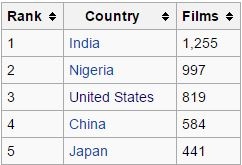Understanding EIGRP #3
prepared by SURAJ (imeansuraj@gmail.com)
Within the EIGRP packet header:- Version field - is 4-bit field used to indicate the protocol version of the originating EIGRP router process. The version has not changed since its release.
- OPCode - is a 4-bit field that specifies the EIGRP message type, 1 = Update, 3 = Query, 4 = Reply, 5 = Hello, 6 = IPX SA, 10 = SIA Query, 11 = SIA Reply.
- Checksum – is a 24-bit field that is used to run a sanity check on the EIGRP packet itself. This field is based on the entire EIGRP packet and not including the IP header.
- Flags – is a 32-bit field that is used to indicate either an INIT (when set (0×00000001)) for a new EIGRP neighbour or for the Conditional Receive (CR) (second bit (0×00000002)), used in the proprietary Reliable Multicasting algorithm, for EIGRP Reliable Transport Protocol. (RTP)
- Sequence – is a 32-bit field that contains sequence number used by RTP. This is used to ensure orderly delivery of reliable packets.
- Acknowledgment – is a 32-bit field that contains the sequence number last heard from the neighbour to which the packet is being sent. A Hello packet with a nonzero ACK field will be treated as an ACK packet rather than as a Hello. Note that an ACK field will only be nonzero if the packet itself is a unicast because an acknowledgment are never multicast.
- Autonomous System Number – is a 32-bit field that identifies the number of the EIGRP domain.
- Type/Length/Value (TLV) – is a 32-bit triplet field that is used to carry route entries, as well as provide EIGRP DUAL information.
- EIGRP does not build peer relationships over secondary addresses. All EIGRP traffic is sourced from the primary address of the interface.
- When configuring EIGRP over a multi-access Frame Relay network (point-to-multipoint, and so on), configure the broadcast keyword in the frame-relay map statements.
- There are no limitations on the number of neighbours that EIGRP can support.
- very low usage of network resources during normal operation; only hello packets are transmitted on a stable network
- when a change occurs, only routing table changes are propagated, not the entire routing table; this reduces the load the routing protocol itself places on the network
- rapid convergence times for changes in the network topology (in some situations convergence can be almost instantaneous)
Difference between EIGRP and OSPF:






This was helpful buddy ty... :)
ReplyDeletethank you john
Delete